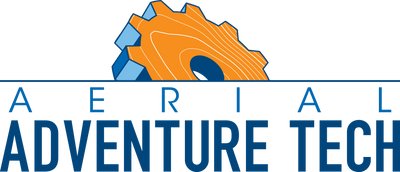“Give me six hours to chop down a tree and I will spend the first four sharpening the axe.” As far as we know, Abraham Lincoln never rode a zip line, but his words having meaning for adventure industry operators including how we prepare for and react to incidents at our facilities. In this article, Cameron Annas with Granite Insurance breaks down what you can expect to happen following an accident and steps you can take to be prepared.
Imagine this moment as you stand outside your office watching as the final group of the day loads into the UTV to start their tour. It’s been a great summer, your staff have been amazing and you’ve seen your highest number of participants in a single season. You are looking forward to some well deserved down time as the prime season comes to a close. A short time later, you hear a chilling call come across the radio.
“Call 911! Call 911! A participant has fallen. I am going down to them now, call 911!”
It’s the gut wrenching moment you hoped you would never happen and now it has. You and your team have planned and practiced incident response and you jump into action. You finish stabilizing the patient as the first responders arrive on-scene and the injured party is transferred to the hospital. While operators practice and prepare for incident response, what you do following the initial response can be just as important. So what happens after medical attention is received, how do you document this incident, and how much detail should you retain? Let’s dive in.
Medical Attention
First and foremost, the number one priority is always getting the injured party the proper medical attention they need. A couple of hard and fast rules governing medical attention:
- An ambulance or professional medical attention should always be offered for all. If they decline, have a section on your incident report that they initial testifying that they declined medical care.
- NEVER transport the participant yourself to the hospital or to medical care.
- If the participant is unconscious or cannot move themselves, be VERY careful about moving them. If they complain of head, neck, back or spinal pain then DO NOT move the participant.
Post Incident Follow-Up
It means something to people when you care enough to check-in on them. Following up with the participant to see how they are feeling, how the medical visit went, etc. is a highly suggested practice. Always date and document these conversations on the back of the incident report or, even better, have a specific section on your report dedicated to “Post Incident Follow-Up Notes”. Before discussing your insurance policy or paying for medical expenses, make sure you consult with your agent or broker.
Who Do I Call First?
Following a serious incident, your attorney should be the first person you call. This allows you to continue the incident investigation under direction from legal counsel and evidence will be secured under client-attorney privilege. Take time before an incident occurs to talk with your attorney and get on the same page about steps to follow after an incident.
Following the call to your attorney, your next call should be to your insurance agent or broker to make them aware of what has happened. As with your lawyer, talk to your agent before an incident occurs to understand what steps and actions are recommended based on your insurance coverage.
Documentation - Reports, Witnesses Statements, Photos
When completing all of the documentation and reports, keep the following fact in perspective. It may be two or even six years (depending on the state) before you are served with papers naming you in a lawsuit. This is often an intentional strategy from the opposing attorney! They may wait until the last several days before the statute of limitations expires hoping that with the years that have passed since the incident, staff involved are no longer there, nobody remembers the details of the incident, or that you may have lost important documentation and details. That is why it is so important to make sure that reports, witness statements, and photos paint a clear picture of events as you may be asked to recall them many years later.
Incident Reports
The incident report should be FACTUAL. Do not ask any opinionated questions or accusatory questions (e.g. what could have prevented this accident from happening?). Incident reports are not the place to address fixing the causation of the issue. Simple questions: Who? What? When? Where? That’s it!
Only managers and higher level staff should be completing incident reports as they are best positioned to understand the long term effects of what they write on an incident report. I would suggest an annual training facilitated by your agent or broker regarding “Dos and Don’ts of Incidents/Incident Reporting” for all of your management staff.
Other Reports
Go ahead and collect the following reports after the incident and put them in your file for this incident.
- ACCT Inspection Report (most recent)
- Arborist Report (most recent)
- If a vehicle is involved, most recent maintenance records
- If equipment is involved, most recent equipment log
- Daily Inspection Log (from the day of the incident)
- Training Logs for the employees involved in the incident
Witness Statements
Collect 2+ witness statements from guides/managers involved in the incident and 2+ witness statements from participants that witnessed the incident (that are NOT part of the family/friends the injured participant came with). The following information is all that should be included and nothing more:
- Name
- Contact Info (phone, address and email)
- Please describe how you witnessed the incident, in as much detail as possible
- Signature
- Date
NEVER ask the witness, who is a novice to the industry, what they feel like the causation of the accident was. Let’s leave this up to the experts!
Photos
Having to recreate the accident two or even six years later is a difficult task. Especially if the guides, employees or managers that were part of the accident are no longer employed by the organization. Photos make this a lot easier! Here are the items you should take photos of:
- General area where the incident occurred (platforms, cables, surrounding terrain, etc.)
- All equipment that was involved in the incident.
- Posted participant rules and procedures to document that these were in place the date of the incident.
Preserving Equipment and Evidence
All equipment that is involved in the incident (harnesses, gloves, trolleys, braking systems, etc.) should be retired and tagged "DO NOT USE. EVIDENCE." until further directed by your attorney. If you put this equipment back into circulation before being directed to do so, or before the opposing attorney has the chance to inspect the equipment then you could be accused of “destruction of evidence”.
If an inspection is going to be done on a particular piece of equipment to see if it was functioning properly, always use a third party inspection company and not the original manufacturer. If the manufacturer is inspecting their own equipment, and they know an incident happened, the chances of them admitting product failure is very slim!
The Legal Battle
Keep in mind that this whole process and legal battle could take place over many years. Some cases have been on-going for more than six years. That being said, don’t let the process emotionally drain you. Accept that this will be a long process, stay focused on your company and leave the legal battle and administration of the legal battle to the claims professionals and attorneys.
The process for the legal battle can take many shapes and forms, however here are some very common steps that it’s likely to take:
- Initial Settlement Attempt. A settlement attempt is quite often offered prior to filing the suit. Please keep in mind that all settlement attempts should be handled by your insurance company. Not allowing them to do so could breach and void your entire insurance contract and coverage.
- Attorney Selection. While the insurance company does assign your legal counsel, you can have some input on this. I would recommend working with an attorney that has experience in this industry and understands what the word zip line and ACCT means. Insurance agents specializing in this industry should be able to help guide you to an attorney experienced in defending these types of lawsuits.
- Suit. If the settlement attempt is unsuccessful or the insurance company does not think the incident warrants the requested settlement, the injured participant may file suit or it may simply go away. If the suit moves forward, you will be “served” and be given a set number of days to provide a response. Since you only have a certain number of days to respond, it is very important that you get your insurance company a copy of the suit ASAP!
- Discovery. Once the response has been filed, the initial phases of discovery happen. This is when all your dirty laundry gets aired out! They may request incident reports, training logs, prior incident reports, inspections, staff resumes, etc. If you are properly prepared, all the information they are requesting will be ready to go, in its original form and you won’t have to recall any information from memory.
- Judgement/Settlement/Verdict. The process of turning over evidence, depositions, mediations, expert witnesses and studies will continue until both parties (and/or jurors) can agree on whether the company was negligent for the incident. Keep in mind, many cases will involve multiple parties (operator, builder, and manufacturer) and assigning at-fault percentages may be part of this process.
Litigation resulting from a serious incident can be a long and emotionally draining experience. Take time before an incident occurs to plan and prepare for the legal process that is likely to occur following the initial response. Talk with your lawyer and insurance agent or broker before an incident occurs and outline your management plan for post-incident documentation using their input. Finally, make sure you have systems in place to capture and store information about the incident so that it can be recalled with clarity, even if that is years in the future. Following these steps will help ensure that the facts of the incident are correctly portrayed and that responsibility and legal obligations resulting from a settlement or suit are appropriately assigned.
![]()


